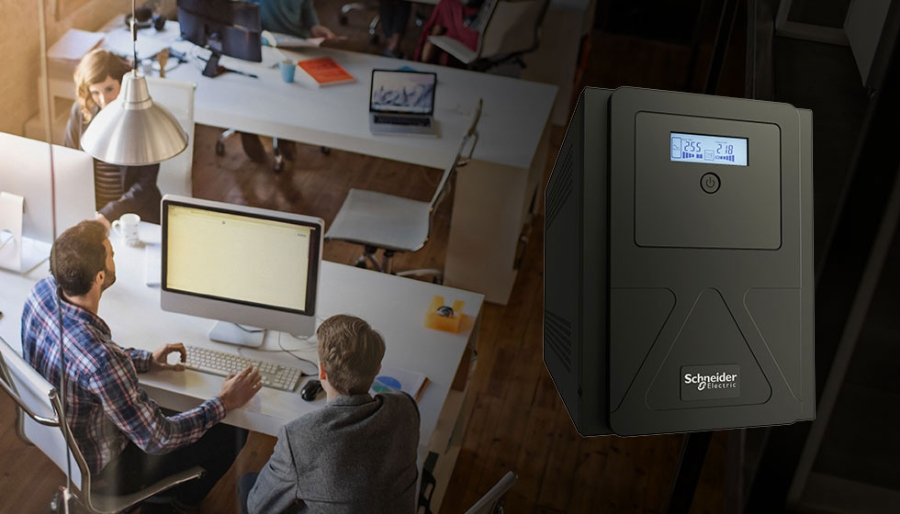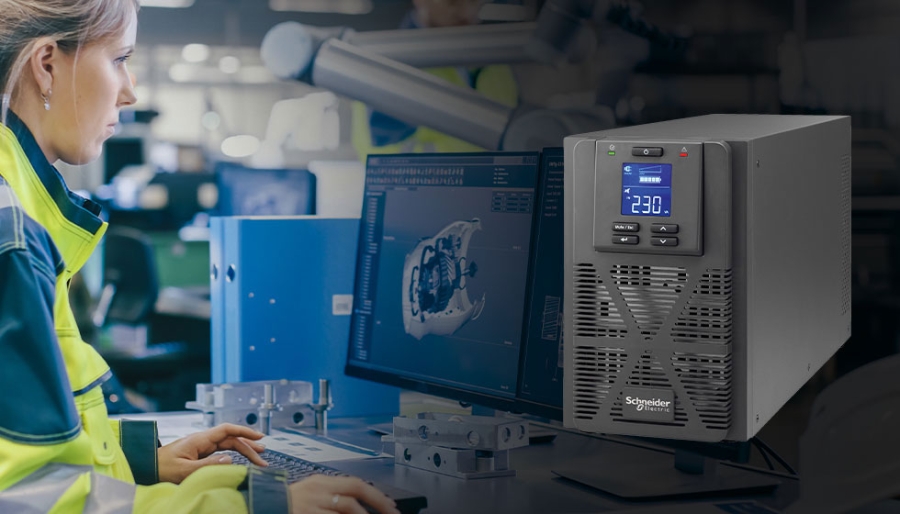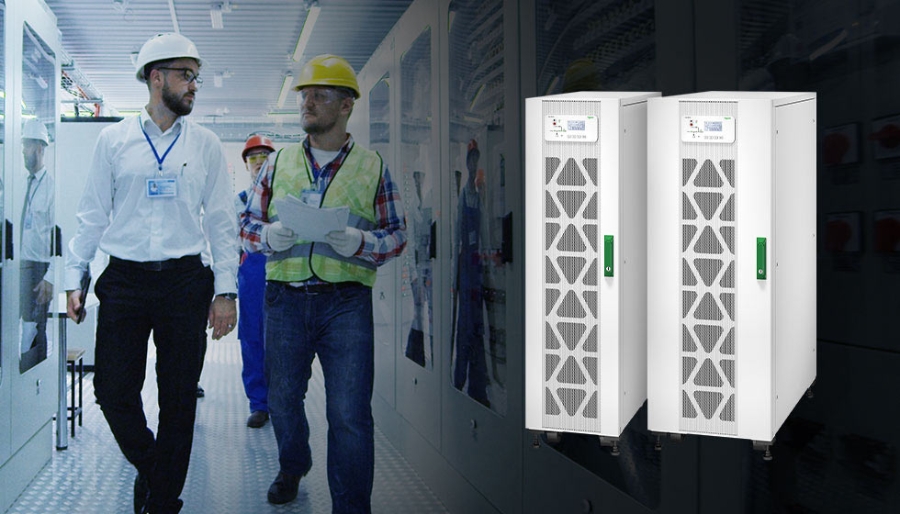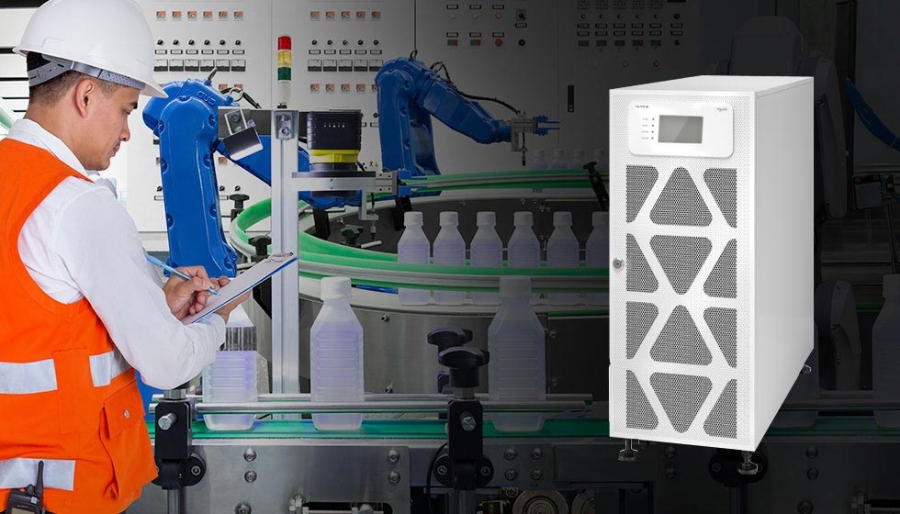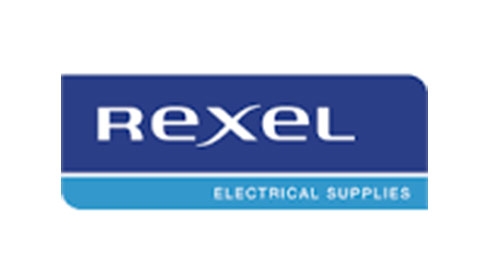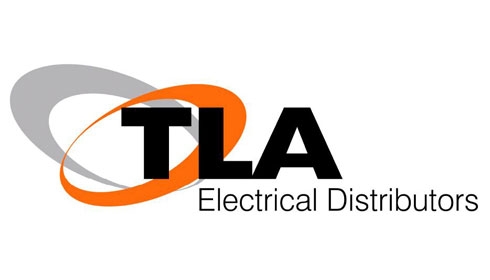The technological world around us has become highly dependent upon the continuous availability of electrical power. Sophisticated technology is now an integral part of our lives both at home and at work, and with the advent of e-commerce the way in which we interact with the rest of the world is continually changing.
Intelligent technology demands power that is free of interruption or disturbance. Many of the issues associated with equipment failure, software and data corruption and downtime are the result of a problematic supply of power.
-
UPS stands for Uninterruptible Power Supply. A UPS device provides back up power stored in batteries to a critical load when the primary power source fails, providing near-instantaneous protection from harmful power interruptions. A UPS device or system can be used to protect critical applications in homes, small and medium businesses, data centres and other applications from unexpected power disruptions which could potentially cause injury or death, severe business fluctuations, or data loss.
-
In order to establish which Easy UPS device best suits the needs of the application, the voltage range – or kVA value – of the equipment to be protected needs to be understood. Generally, loads of 10kVA or less can safely use a single phase UPS. Larger loads will likely need a 3-phase UPS.
If it is determined that a 3-phase UPS is required, the next question is whether to use a 3-to-1 phase or a 3-to-3 phase configuration. A 3-to-1 UPS takes in 3-phase power but puts out single phase while a 3-to-3 phase configuration takes in 3-phase power and likewise delivers a 3-phase output to the downstream loads.
-
UPS Capacity
A UPS device must have enough capacity to support all the equipment it is required to protect – otherwise known as the ‘load’.
The total Load is the combined amount of power that each of the devices connected would draw from the power supply. To calculate the load, list all equipment to be protected by the UPS including the total Voltage Amp (VA) rating that each piece of equipment requires to run correctly. All modern-day equipment and appliances will indicate the VA rating.
Some devices may list their power requirements in Watts. To convert watts to VA, simply divide the watts by the ‘power factor’ of the device or appliance. If the power factor is not listed, use 0.8.
When selecting a UPS, be sure that the total VA requirement of supported equipment does not exceed the VA rating of the UPS. Click here to use our online calculator to determine the power draw of your equipment.
Runtime
Runtime is the number of minutes a UPS system can support the connected load during a power outage. The minimum runtime should be based on the time required to allow graceful shutdown of critical equipment.
A ‘graceful shutdown’ is when all devices can be closed and shut down following standard procedures, thus avoiding a sudden ‘Hard’ shutdown which might result in loss of work or data.
-
‘Topology’ refers to the layout of a system - the way in which constituent parts are interrelated or arranged.
UPS Topology relates to the components and internal wiring used by a UPS device to deliver its power protection. Determining which Topology you should use is based on two main factors: the type of equipment you need to protect, and the importance of that equipment in maintaining your critical business operations.
Line-interactive UPS systems typically transfer from mainstream supply to battery-derived power within two to six milliseconds, which is more than fast enough to keep all but a small percentage of the most power-sensitive equipment operating without interruption. Line Interactive Topology is widely used in IT Server & Communication Room applications, supporting Business-grade Servers, Storage, CCTV, POS and Networking equipment. Smaller units are also found around the home supporting Home Office PC’s and peripherals.
Double conversion online topology is preferred for highly critical loads that are very sensitive to power fluctuations. Double Conversion On-line UPS systems have ZERO transfer time because the inverter is already supplying the connected equipment load when an outage occurs.
Double Conversion Online Topology is essential for medical environments where instantaneous protection is critical. Double Conversion Online topology is also very prevalent in industrial environments supporting production and manufacturing lines, remote and harsh power environments found in the Roads and Rail transport sector and Oil and Gas applications.
-
IEC appliance couplers and connectors comply with the International Electrotechnical Commission (IEC) standards - a fixed set of input and output receptacles that can be installed by the user. Quite simply put: ‘Plug & Play’ connections.
Hardwired connections necessitate that a qualified electrician is used to connect the UPS device directly to the electrical distribution panel at the installation location.
-
An SNMP card provides direct communication with the Easy UPS device, and with it the ability to monitor and manage UPS device status remotely through either the UPS Web interface or through EcoStruxure IT's cloud-based and on-premise software suites. Several models in the range can be adapted with the addition of an SNMP card facility. Click here for more information about EcoStruxure IT.
Easy UPS Single Phase Range
The Schneider Electric Easy UPS series are easy-to-install, easy-to-use, and easy-to-service. Trusted by millions of professionals around the globe.
Easy UPS Three Phase Range
The Schneider Electric Easy UPS 3 Series is an easy-to-install, easy-to-connect, easy-to-use, and easy-to-service 10-200 kVA 3 phase UPS ideal for small and medium businesses, data centers, and other mission critical applications.
Services
Where to buy

Save time by starting your sales enquiry online and an expert will connect with you! Please help us respond to your needs by supplying the following details.
To make a technical support inquiry, please contact support.






